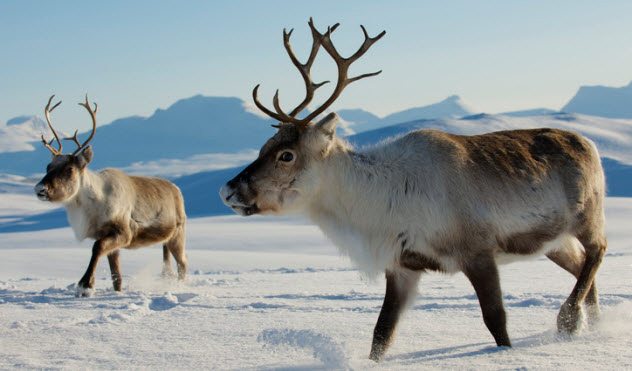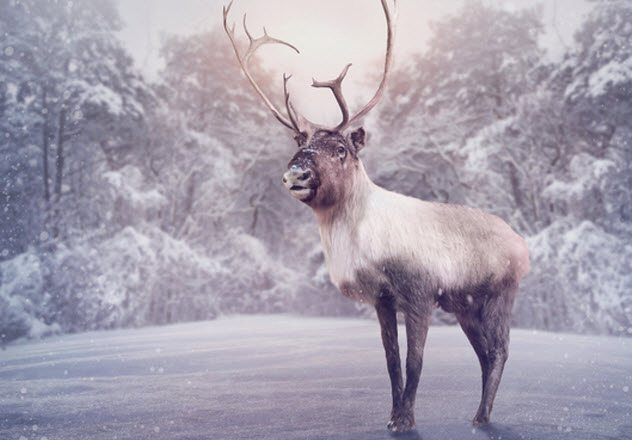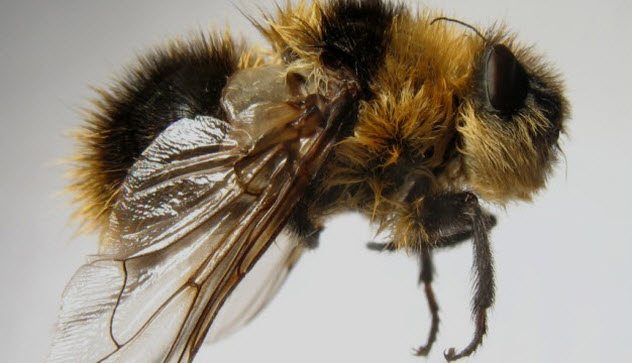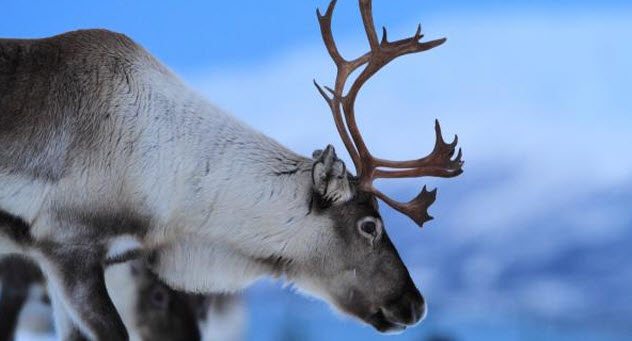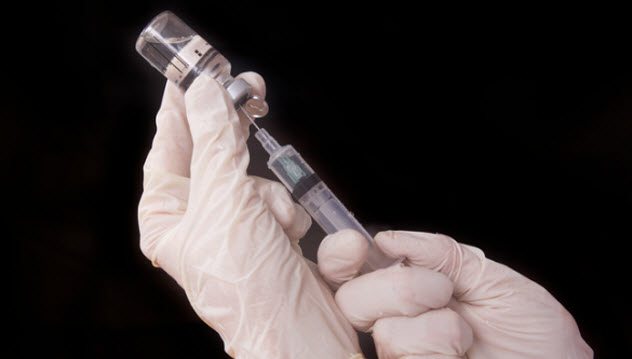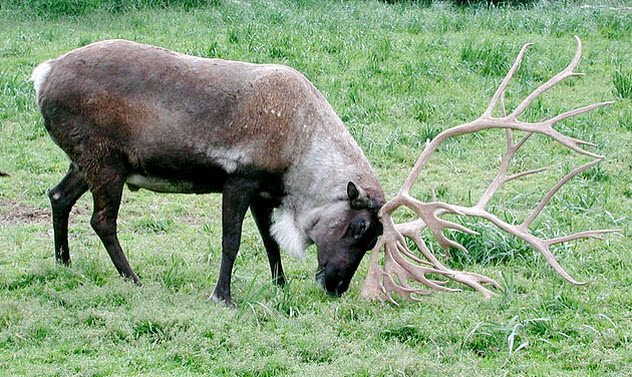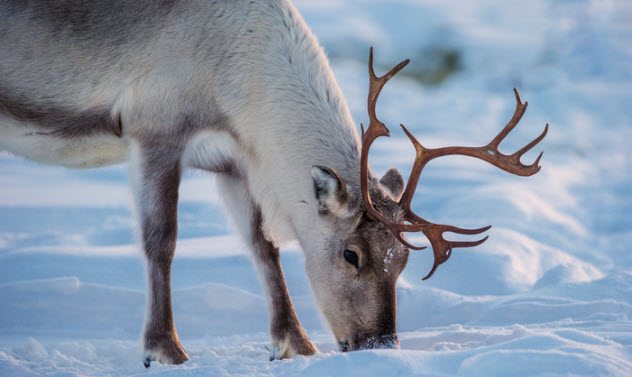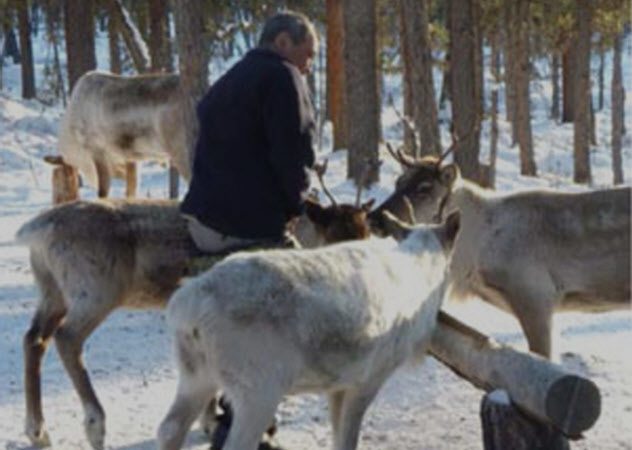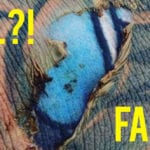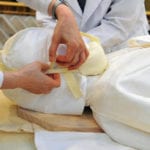Those who live outside the natural range of reindeer may think of them only at Christmastime. In other cultures, however, reindeer are a way of life. Here are some little-known, odd, and even disgusting facts about reindeer.
10 Domestic And Wild Differences
There are different estimates on when reindeer were domesticated. In Eurasia, they are believed to have been tamed about 7,000 years ago. Other estimates say it happened around 2,000–3,000 years ago. Despite this long process, reindeer are described as only semidomesticated for two reasons. First, reindeer have not been subject to significant artificial selection until recently. Second, it is common for human-kept reindeer to mate with wild reindeer because human-managed herds are rarely confined and live near wild herds.[1] There are some differences between the bodies of semidomestic and wild reindeer. The semidomestic animals are slightly smaller and have shorter snouts. They are also more colorful. In the wild, different reindeer populations have different colors, but color is more variable among members of a domestic herd. Domestic herds even have the occasional pinto reindeer. Until recently, reindeer were intensively milked in a part of Russia west of Lake Baikal. There, domestic reindeer are said to have udders 25 percent larger than those of their wild neighbors. Domestic and wild reindeer differ in behavior, too. When compared to the wild populations, domestic reindeer mate and give birth a month earlier, are less ambitious when migrating, and have less endurance when doing so. Most obviously, domestic reindeer are tamer than their wild counterparts, are more tolerant of humans, and are easily trained.
9 Hot And Cold In The Arctic
A reindeer’s fairly long legs help it migrate and flee predators. However, the length of these legs may make them prone to heat loss. This risk is counteracted by a specialized arrangement of blood vessels. Warm blood flowing into the legs passes closely by cold blood returning from the legs. Some heat exchange happens between the two, and the warm blood is cooled. Overall, very little heat is lost from the legs. Reindeer have a similar system inside their noses, which have structures of bone and cartilage called “conchae” that look like rolled-up scrolls. The conchae are covered in a mucous membrane that has lots of blood vessels. Cold air that goes through the reindeer’s nose passes over the warm mucous membrane and is heated to body temperature.[2] This causes the air to become saturated with water vapor on its way to the lungs. The water then trickles into special folds, which direct it to the back of the animal’s nose and into its throat. When the reindeer breathes out, the warm, humid air passes over a temperature gradient as it flows over the cold mucous layer. The air is thus cooled, and its water vapor condensed. As a result, unlike most mammals, the air from a reindeer’s nose is cold and relatively dry.
8 Flies In Reindeer Noses
In July and August, reindeer may violently shake their heads, stamp their feet, and race over the tundra for no obvious reason. This is to avoid parasitic flies, including the bot fly Cephenemyia trompe. Unlike most flies, the fluffy, beelike C. trompe does not lay eggs. Instead, it squirts tiny maggots right into reindeer noses.[3] These larvae develop in the reindeer’s nasal passages for a bit before burrowing deeper into the sinuses and throat. By spring, the larvae have grown so much that they may form a mass big enough to interfere with breathing. Indeed, in heavy infections of C. trompe, there may be over 50 larvae inside the nose. In extreme cases, the reindeer will suffocate. Once fully grown, the larvae crawl back into the nasal passages, where they are sneezed or coughed out by the reindeer. The maggots then burrow into the ground and spend the winter resting and turning into adult flies. By the time the flies emerge, the herd has moved on. This is not a problem for the flies, though. Their antennae react to the smell of reindeer urine and the pheromones secreted between the reindeer’s toes. The flies can follow this scent to track reindeer for more than 48 kilometers (30 mi).
7 Antlers
To have antlers in December, Santa’s reindeer must be one of three things: female, castrated, or immature. This is because mature, intact male reindeer shed their antlers in autumn. The other kinds of reindeer keep their antlers into winter. Reindeer are the only deer where the females have antlers. This has long puzzled people. It seems impractical to grow and then shed antlers each year, especially in the less hospitable parts of the reindeer’s range. It was suggested that female reindeer grow antlers to ward off predators. However, as reindeer shed their antlers each year, these animals would not be able to use antlers as a defense against predators in the four to five months it takes for antlers to grow.[4] It is more likely that female reindeer have antlers to fight something else: their own kind. During the winter, food is scarce. Reindeer must dig pits in the snow to uncover lichen, their main winter food. Reindeer defend these pits from others who might steal the food. Mature females, but not mature males, have antlers in winter. So females are better able to defend their lichen pits from bigger (but antlerless) mature males. There is some benefit to the males losing their antlers first. As reindeer are often pregnant in winter, they need extra food. With the females getting more food, the developing offspring have a greater chance of living to be born in the spring.
6 Birth Control Shots For Male Reindeer
The behavior of male reindeer, or bulls, greatly changes during the rut (the mating season). During this time, they are aggressive, destructive, and dangerous both to handlers and other reindeer. The activity of the rut adversely affects a male reindeer’s health. He loses up to 35 percent of his body mass despite his dominant status or proximity to female reindeer. Furthermore, keeping enough male reindeer for a herd behind a fence requires a large investment and a lot of skill to bring the animals into the post-rut phase. Reindeer producers have been using Depo-Provera, a birth control drug, to counteract the behavioral changes of the rut. Ideally, reindeer bulls are injected with Depo-Provera the first day they begin to shed their antler velvet, for this is thought to be the initial sign of rut. Reindeer on Depo-Provera still mate, but they are usually less aggressive.[5] In addition, bulls that have had the drug injections every year from an early age have longer lives. Typically, male reindeer live for 7–8 years, while female reindeer live 14–18 years. This is thought to be due to the extreme levels of hormones in the bulls’ bodies during mating season. Eventually, the bull will go into rut and die of a heart attack. Bulls that receive Depo-Provera have been known to live to age 12.
5 Reindeer Noises
In several deer species, male deer make distinct calls during mating season. Reindeer are unique among deer in having an air sac near the windpipe for this purpose. This air sac is inflated when male reindeer make their guttural, rattling calls to attract female reindeer and repel rivals.[6] Reindeer do not have air sacs at birth. They develop later on. In early life, air sac growth is comparable between male and female reindeer. However, at 2–3 years old, the air sac stops growing in females. In males, it keeps growing until the reindeer is six years old, leading to a big difference between the two. In males, the air sac is asymmetrical, extending either to the left or right of the underside of the neck. At the beginning of the rut, the diameter of a male reindeer’s neck greatly increases due to the increasing mass in its neck muscles. During the rut, males also grow a beard-like neck mane at roughly the same place as the air sac. While the animal is calling, this mane is spread out, making a visual signal.
4 Eating Lichen
Reindeer are unusual among mammals in eating a lot of lichen. It makes up 60–70 percent of their diet during the winter. Depending on the lichen species, reindeer can digest 40–90 percent of the organic matter in lichens. This is much better than sheep and cows, which can only digest a much smaller percentage. Like sheep and cows, reindeer are ruminants: They have multiple stomach compartments. Bacteria live inside the rumen, or first stomach. These bacteria, along with the reindeer’s lichen-digesting enzymes, allow reindeer to survive on such an unusual diet.[7] Although lichen is high in carbohydrates, it is very low in protein and minerals. Without a nitrogen supplement, reindeer in captivity lose weight on a lichen-based diet. However, reindeer have a neat trick to deal with a low-protein diet. Urea, the primary component of urine, is high in nitrogen. Reindeer kidneys can concentrate urea to recycle it to the rumen. Bacteria in the rumen use urea and a fermentable source of carbohydrates (namely, lichens) to make protein through bacterial protein synthesis. The kidneys are quite good at this: 71 percent of urea made in the winter is recycled to the gut.
3 A Diet Of Droppings
Spitsbergen is the only permanently inhabited island in Svalbard, an island chain in northern Norway. With its eight months of winter, it is one of the most inhospitable places in the world. During the winter, its reindeer meet daily energy needs by feeding off a sparse covering of low-quality plants such as mosses. The reindeer have adapted to this harsh habitat of low-quality food in a very strange way—by eating goose droppings. During the summer, barnacle geese live around the lake shores of Spitsbergen. They eat almost all the grass available as well as some moss. However, they do not digest cellulose very well. In contrast, reindeer can digest cellulose with the help of microbes in one of their stomachs. Reindeer are choosy. According to one study, they preferred goose droppings that contained grass pieces to those with moss pieces. During regular sleeping periods, geese made piles of 6–8 droppings. Several times, the researchers saw reindeer chasing geese away to eat the piles of droppings.[8] The study made a rough estimate that 6–8 reindeer could live on goose droppings during the two months the geese were around. Therefore, goose droppings could be a significant source of extra food for a few reindeer.
2 Reindeer Are Fond Of Their Own Urine
A reindeer’s fondness for urine is not limited to that of humans. Like other deer, reindeer of both sexes rub their hind legs together while urinating on them. This sprays urine into the air while putting components of the urine into the hocks to be used as a signal at a later time. During the rut, the urine on a male’s hind legs acts as a scent signpost to others of his kind. This is thought to happen because the male is the center of his moving territory. Associated with dominance and aggression, this behavior usually ends a series of aggressive actions.[9] Reindeer do not only urinate on themselves. A male reindeer digs in the soil, urinates there, and then rubs his nose in it for at least 10 minutes. Female reindeer may also rub their noses in these patches of urine.
1 Reindeer Love Human Urine
A reindeer’s diet is deficient in salt. On the coast, reindeer get salt by drinking seawater or licking salt deposits on the beach. But away from the coast, salt is harder to come by. Like other deer, reindeer are easily attracted by salt. Unlike other deer, reindeer are especially attracted to salty human urine.[10] The Inupiat people of Alaska take advantage of this by using human urine as bait for pitfall traps. The smell attracts the curiosity of passing reindeer, which approach the pit and are killed by the spikes at the bottom. The Tozhu Tuvan (or Tozhu) people of Tuva in Russia take this further. Though they are domestic animals, their reindeer forage for their own food and fend for themselves like wild reindeer. What keeps the reindeer tame and tractable? Urine. Urine and regular salt are used as offerings for the reindeer, compelling them to return to Tozhu campsites. Though reindeer fear the smell of humans, they are trained to connect humans with the salt they love and so seek them out. Tozhu men are used to urinating near the house, often on a hollow tree stump or a sort of tree-trunk urinal built for the reindeer. In winter, the urine freezes immediately and is conserved in these urinals so that reindeer can easily lick it when they come to the campsite. Reindeer are so fond of human urine that some of them will immediately gather around or even run up to a Tozhu man who seems about to urinate. Jenn Dandy likes parasites, biology, Pokemon, and well-made cartoons. Her Tumblr is http://argentdandelion.tumblr.com/.
